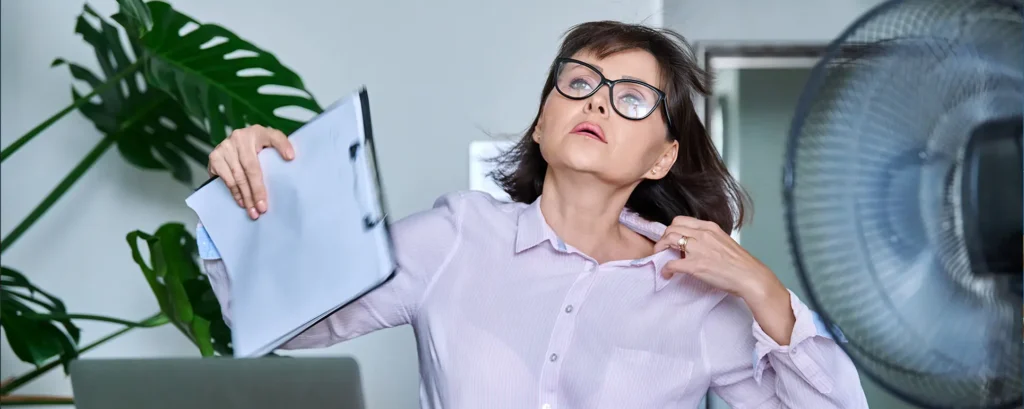Excessive sweating, also known as hyperhidrosis, can significantly affect daily life, social interactions, and self-confidence. While some people experience mild sweating, others struggle with persistent moisture that occurs even in cool conditions or at rest.
If you’re asking, “What medication can stop excessive sweating?” you’re not alone. Dermatologists have several options available, including oral medications, topical treatments, and Botox injections. Each treatment is tailored to your specific needs, severity, and lifestyle.
In this guide, I’ll explain the medications and treatments used to manage hyperhidrosis, how they work, what to expect, and how doctors determine the best approach for you.
Understanding Hyperhidrosis

If you find yourself sweating more than what seems normal sometimes even when it’s not hot or you haven’t been active you might be dealing with hyperhidrosis. This is a medical condition where your body produces excess sweat beyond what’s needed to regulate your temperature. While it’s often harmless, it can be frustrating and even impact your confidence or daily life.
There are two main types you should know about:
1. Primary Hyperhidrosis
This type happens when your sweat glands are overactive for no obvious reason. It usually targets specific areas like your hands, feet, underarms, or face. You might notice your palms getting sweaty before a meeting, or your feet feeling damp even in cool weather.
2. Secondary Hyperhidrosis
If your excessive sweating is caused by another medical condition, it’s called secondary hyperhidrosis. Conditions like thyroid problems, diabetes, menopause, or even certain medications can trigger this. Here, sweating tends to affect larger areas of your body and may happen both day and night.
When it comes to managing hyperhidrosis, treatment depends on the type and severity. Options range from topical antiperspirants and oral medications to more advanced therapies like Botox injections, iontophoresis, or even surgery in severe cases. Often, a combination of approaches works best, so you can get the relief you need while improving your quality of life.
Oral Medications for Hyperhidrosis
If you’ve tried creams and antiperspirants but still struggle with excessive sweating, oral medications could be an option for you. These are usually anticholinergic drugs, which work by blocking the chemical signals that tell your sweat glands to produce sweat.
Common Oral Medications:
- Glycopyrrolate: Often prescribed to reduce sweating in your hands, underarms, and face.
- Oxybutynin: Typically used for bladder issues, but it’s also effective in managing excessive sweating.
- Methantheline or Propantheline: Less common, but sometimes recommended if your hyperhidrosis is severe.
Benefits of Oral Medications:
- Can help if your sweating affects multiple areas of your body.
- Non-invasive and easy to take compared with injections or surgery.
- A good option if topical treatments haven’t worked for you.
Things to Keep in Mind:
- These medications may cause side effects like dry mouth, blurred vision, constipation, or difficulty urinating.
- They might not be suitable if you have certain heart, eye, or gastrointestinal conditions.
- Dosing needs careful supervision by a dermatologist to make sure it’s safe and effective for you.
With the right guidance, oral medications can make a noticeable difference, helping you feel more confident and comfortable in daily life.
Topical Treatments

If your sweating is mostly in specific areas like your underarms, hands, or feet, topical treatments are usually the first approach you’ll try. These are applied directly to your skin and can be very effective for localized sweating.
1. Aluminium Chloride Hexahydrate
- Found in strong antiperspirants or prescription formulations.
- Works by temporarily blocking your sweat glands, reducing moisture.
- For best results, apply at night on clean, dry skin this gives it time to work while you sleep.
2. Other Topical Options
- Glycopyrrolate creams: Great if you struggle with facial sweating.
- Botanical extracts: These can sometimes help, though they’re usually less effective and best used alongside other treatments.
Why You Might Like Topical Treatments:
- They’re non-invasive and easy to apply at home.
- Can be very effective if your sweating is mild to moderate and confined to specific areas.
Things to Watch Out For:
- Some people experience skin irritation, redness, or a burning sensation.
- They’re less ideal if your sweating is widespread or affects multiple areas of your body.
Using topical treatments correctly can make a noticeable difference and is often a simple first step in managing your hyperhidrosis.
Botox for Hyperhidrosis
If your sweating is severe and localized, especially in your underarms, hands, or feet, Botox injections can be a highly effective option.
How Botox Works:
- It blocks the nerve signals that tell your sweat glands to produce sweat.
- Results typically last 4–12 months, so you may need repeat treatments to maintain dryness.
Why You Might Consider Botox:
- Very effective for targeted areas where other treatments haven’t worked.
- Minimal systemic side effects, since the treatment is localized.
- Non-surgical with relatively quick results you can often get back to your routine shortly after treatment.
Things to Keep in Mind:
- You’ll usually need multiple injections per session to cover the affected area.
- Some people experience temporary bruising or mild discomfort at the injection sites.
- Cost is higher than topical treatments, so it’s an investment in long-term relief.
Botox can make a huge difference if other options haven’t worked, giving you the confidence to go about your day without worrying about sweat.
Choosing the Right Treatment for You
Deciding how to manage your excessive sweating depends on a few key factors.
Severity: If your sweating is mild, topical treatments may be enough. But if it’s severe, you might need oral medications or Botox to get real relief.
Location: Where you sweat matters. Localized areas like your underarms, hands, or feet often respond well to topical treatments or Botox, while generalized sweating across multiple areas may be better managed with oral medications.
Lifestyle: Your day-to-day routine and preferences play a role. You’ll want to consider convenience, comfort, and whether you’re open to injections.
Medical History: Certain health conditions or medications can affect which treatments are safe for you.
Ultimately, a dermatologist will evaluate your unique situation and recommend a personalised plan that gives you the best results safely. With the right approach, you can manage your sweating effectively and regain confidence in your daily life.
Lifestyle Adjustments to Support Your Treatment
While medical treatments are the main way to control hyperhidrosis, making a few lifestyle adjustments can really help boost your results and make daily life more comfortable.
- Wear breathable fabrics: Choosing clothes made from cotton, linen, or moisture-wicking materials can help your skin stay dry and prevent sweat from feeling uncomfortable or sticky. Synthetic fabrics may trap heat and make sweating worse, so picking the right clothing is key.
- Maintain good hygiene: Frequent washing and using deodorants or antibacterial soaps can reduce bacteria that cause odor and skin irritation. You might find it helpful to keep a small towel or wipes handy during the day for quick touch-ups.
- Manage stress and anxiety: Stress can trigger sudden sweating episodes, so relaxation techniques like deep breathing, meditation, yoga, or even short walks can make a noticeable difference. You may also find mindfulness or cognitive strategies helpful for staying calm in anxiety-inducing situations.
- Be mindful of triggers: Certain foods and drinks, like spicy meals, caffeine, or very hot beverages, can increase sweating. Hot environments or prolonged sun exposure can also worsen symptoms, so staying cool and hydrated can help.
- Foot and hand care: If your hands or feet sweat a lot, frequent washing, changing socks, or using absorbent insoles can prevent discomfort, slipping, or odor.
- Stay active, but smartly: Exercise is great for overall health, but you might want to choose cooler environments or breathable gear to prevent excessive sweating during workouts.
By pairing these practical strategies with your medical treatment, you’re giving yourself the best chance to control sweating effectively, feel confident, and enjoy daily activities without constantly worrying about moisture or discomfort.
Safety and Side Effects
It’s important to remember that all hyperhidrosis treatments can have side effects, but most are mild and manageable when you work with a professional.
Oral Medications:
You might experience dry mouth, blurred vision, constipation, or dizziness. These side effects are usually temporary and can often be reduced by adjusting your dose under your dermatologist’s guidance.
Topical Treatments:
Some people notice skin irritation, redness, or itching where the cream or antiperspirant is applied. Using it correctly on clean, dry skin and following your dermatologist’s instructions can help minimise these reactions.
Botox Injections:
After Botox, you might feel mild discomfort or temporary bruising at the injection sites. Rarely, there may be localized weakness in the treated area, but this usually resolves on its own.
Your dermatologist will help you weigh the benefits and risks of each option, making sure the treatment you choose is both safe and effective for your specific situation. With the right guidance, side effects are usually minor compared with the relief you’ll gain from controlling your sweating.
Monitoring and Follow-Up
Once you start treatment for hyperhidrosis, regular follow-up appointments are important to make sure everything is working as it should.
- Check how well the treatment is working: Your dermatologist will see if your sweating is reducing and whether you’re getting the relief you need.
- Adjust treatments if needed: This might mean tweaking medication doses or modifying Botox injection sites to improve results.
- Manage side effects: If you notice any discomfort or reactions, your dermatologist can help address them quickly.
- Plan for long-term management: Some treatments, like Botox, may require repeat sessions, and follow-ups help you schedule them for the best results.
By keeping up with these appointments, you can make sure your hyperhidrosis treatment is safe, effective, and tailored to your needs, giving you the confidence to go about your day without worrying about excessive sweating.
FAQs About Hyperhidrosis and Its Treatments:
1. What causes hyperhidrosis?
Hyperhidrosis can develop for several reasons. If you have primary hyperhidrosis, your sweat glands are overactive for no identifiable medical cause, which often affects specific areas like your hands, feet, underarms, or face. On the other hand, secondary hyperhidrosis occurs as a result of other medical conditions, such as thyroid disorders, diabetes, menopause, or as a side effect of certain medications. Understanding the cause is important because it helps your dermatologist determine the most effective treatment plan for you.
2. How do I know if my sweating is normal or hyperhidrosis?
You might start to suspect hyperhidrosis if you notice excessive sweating even when you are in a cool environment, at rest, or in situations where others typically would not sweat. This type of sweating often interferes with daily activities, such as holding objects, writing, shaking hands, or choosing clothing. A dermatologist can evaluate your symptoms, rule out any underlying conditions, and confirm whether your sweating qualifies as hyperhidrosis.
3. Can topical treatments stop sweating completely?
Topical treatments are usually the first step if your sweating is localized and mild to moderate. While these creams and antiperspirants are unlikely to eliminate sweating entirely, they can significantly reduce moisture and discomfort in targeted areas. Using them consistently and correctly, typically at night on clean, dry skin, enhances their effectiveness. In some cases, they are combined with other therapies to achieve the best results.
4. Are oral medications safe for long-term use?
Oral medications such as glycopyrrolate or oxybutynin can be highly effective if topical treatments alone do not control your sweating. These drugs work by reducing the signals from your nervous system that stimulate sweat glands. While they are generally safe under medical supervision, they can cause side effects including dry mouth, blurred vision, constipation, or dizziness. Your dermatologist will monitor you closely, adjusting your dosage as needed to minimise side effects while ensuring the medication works effectively.
5. How long do Botox injections last for hyperhidrosis?
Botox injections offer a longer-lasting solution for severe, localized sweating. When you receive Botox, it works by blocking the nerve signals that trigger your sweat glands, and the effect generally lasts between four and twelve months. After this period, the sweating may gradually return, and repeat injections can maintain the dryness. Many people find Botox to be particularly valuable for underarm sweating, where other treatments have limited effectiveness.
6. Can lifestyle changes really help?
Lifestyle adjustments are an important complement to medical treatments. Wearing breathable fabrics such as cotton or moisture-wicking materials helps your skin stay cooler and reduces discomfort. Maintaining good hygiene and using deodorants or antibacterial soaps can prevent odor and skin irritation. Stress and anxiety are known triggers for sweating, so practicing relaxation techniques like meditation, deep breathing, or short walks can help you manage episodes. Being mindful of dietary triggers, like spicy foods or caffeine, as well as avoiding extremely hot environments, can also make a noticeable difference in your daily comfort.
7. Are there risks or side effects with Botox?
Although Botox is highly effective, some temporary side effects can occur. You may experience mild discomfort or bruising at the injection sites, and in rare cases, there can be localized weakness in the treated area. These effects typically resolve on their own within a few days or weeks. When administered by a trained dermatologist, Botox is considered a safe and precise treatment for controlling hyperhidrosis.
8. How do I choose the best treatment for me?
Choosing the right treatment depends on several personal factors. If your sweating is mild and limited to a small area, topical treatments may be sufficient. If the sweating is severe or affects multiple areas, oral medications or Botox may be more appropriate. Your lifestyle and personal preferences also play a role, as some treatments may require daily applications or periodic injections. Additionally, your medical history, including any pre-existing conditions or medications, will influence which treatments are safe and suitable. Your dermatologist will take all of these factors into account to create a personalised plan tailored specifically to you.
9. Will treatment affect my daily life?
Most hyperhidrosis treatments are designed to fit into your daily routine without causing significant disruption. Topical treatments can be applied at night, oral medications are easy to take by mouth, and Botox injections require minimal downtime, allowing you to resume normal activities shortly after treatment. With the right guidance and consistent use, these therapies can significantly reduce sweating, making you feel more confident and comfortable in social and professional settings.
10. How often should I follow up with my dermatologist?
Regular follow-up appointments are important to ensure your treatment is working effectively. During these visits, your dermatologist will evaluate how well the therapy is reducing your sweating, make adjustments to medication doses or Botox injection sites if needed, and address any side effects promptly. Follow-ups are also crucial for planning long-term management, including repeat treatments where necessary. By keeping up with your appointments, you can make sure your hyperhidrosis treatment remains safe, effective, and tailored to your needs, giving you lasting confidence and comfort.
Final Thoughts: Medications and Treatments for Hyperhidrosis
Oral medications, topical treatments, and Botox injections all provide effective ways to manage excessive sweating, but it’s important to remember that not every option is suitable for everyone. Factors such as the severity of your hyperhidrosis, the areas affected, your lifestyle, and any underlying health conditions can influence which treatment will work best for you.
If your sweating is mild and localized, topical treatments may be enough to provide relief with minimal inconvenience. For more widespread or severe sweating, oral medications or Botox injections can offer longer-lasting results, though each comes with its own considerations and potential side effects. Choosing the right treatment involves weighing these factors carefully with a qualified dermatologist.
If you’re considering hyperhidrosis treatment in London, you can get in touch with us at London Dermatology Centre. Our experienced dermatologists will carefully assess your condition, discuss your goals, and recommend a personalised plan that maximises comfort, effectiveness, and long-term results. With professional guidance, managing hyperhidrosis is entirely possible, allowing you to regain confidence in your daily activities, work, and social interactions.
References:
1. McConaghy, J.R., 2018. Hyperhidrosis: Management Options. American Family Physician, 97(11), pp.729–736. Available at: https://www.aafp.org/pubs/afp/issues/2018/0601/p729.html
2. Grunfeld, A., 2009. Botulinum toxin for hyperhidrosis: a review. Journal of the American Academy of Dermatology, 61(4), pp. 711–719. Available at: https://pubmed.ncbi.nlm.nih.gov/19222249/
3. Wong, N.S., 2022. Hyperhidrosis: A Review of Recent Advances in Treatment. Dermatology Research and Practice, 2022, Article ID 9674821. Available at: https://pmc.ncbi.nlm.nih.gov/articles/PMC9674821/
4. Stuart, M.E., 2021. A systematic evidence-based review of treatments for hyperhidrosis. Journal of Clinical and Aesthetic Dermatology, 14(12), pp. 32–38. Available at: https://www.tandfonline.com/doi/full/10.1080/21556660.2020.1857149
5. Nawrocki, S., 2019. The etiology, diagnosis, and management of hyperhidrosis: A comprehensive review. Journal of the American Academy of Dermatology, 80(5), pp. 1395–1406. Available at: https://www.sciencedirect.com/science/article/pii/S0190962219301677
